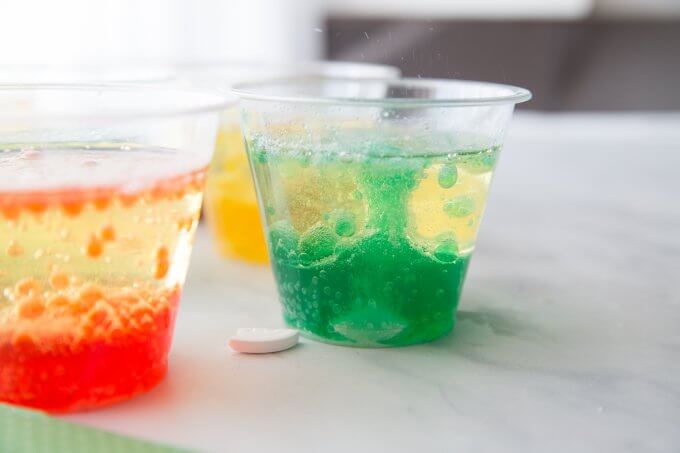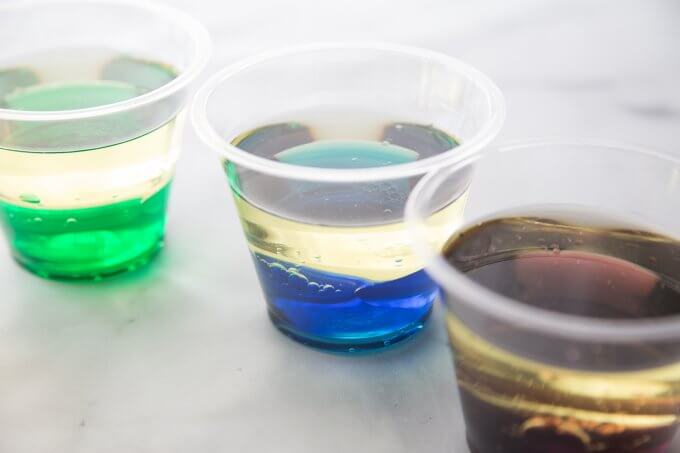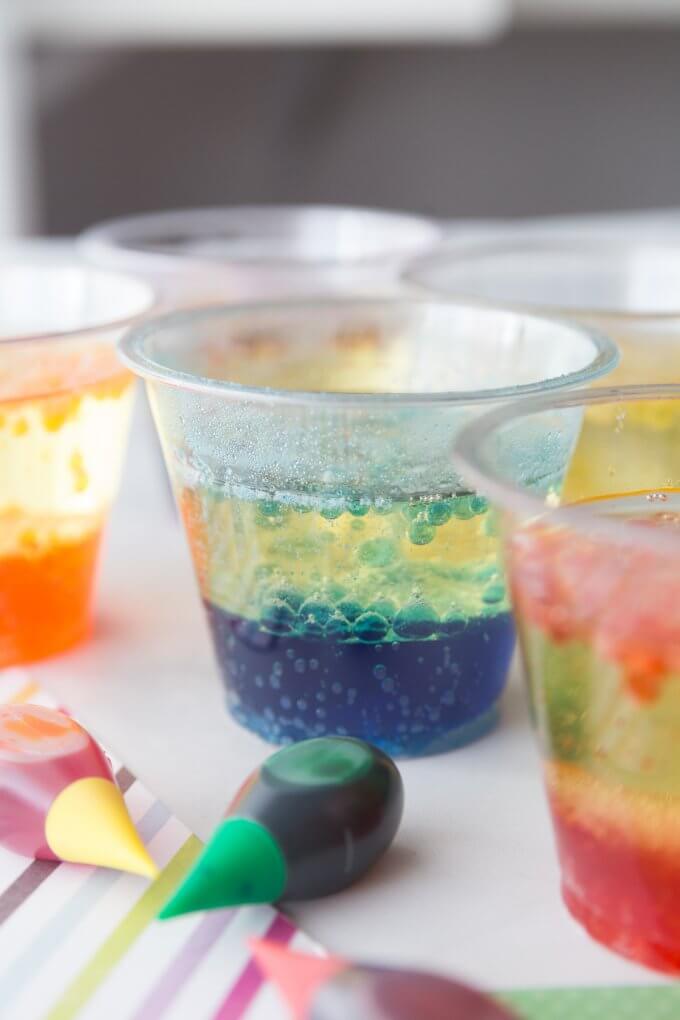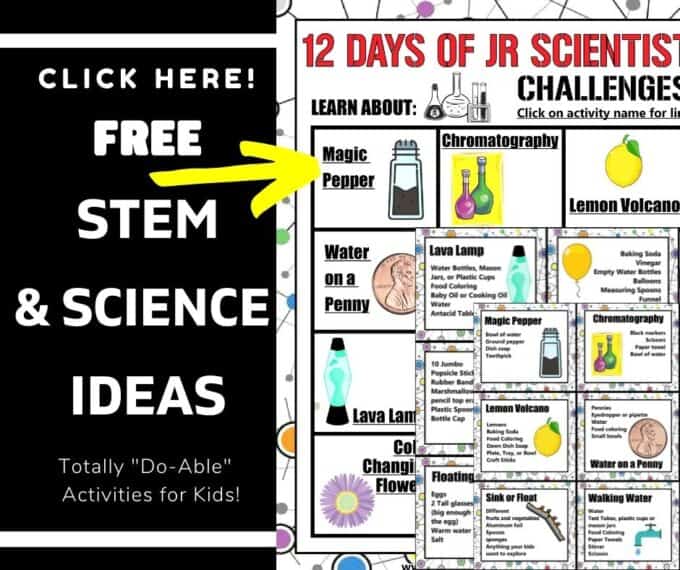

Have you ever made a DIY lava lamp? We love to explore science with common household items. A homemade lava lamp (or density experiment) is one of our favorite science experiments for kids.

You can also experiment with salt with this lava lamp instead of using Alka Seltzer tablets!
💡 Lava Lamp Tip: Set up this experiment on a plastic tray or dollar store cookie sheet to minimize the mess. Dollar stores also have nice little mason jar-like jars you can use too. Science in a jar is quite fun, so we picked up six of them the last time we were there!
STEP 1: Gather your ingredients! We started with one cup and then made a rainbow of lava lamps.
STEP 2: Fill your cup or jar(s) about 2/3 of the way with oil. You can experiment with more and less and see which one gives the best results. Make sure to keep track of your results. See below for more tips on experimentation and using the scientific method.

STEP 3: Next, you want to fill your jar(s) the rest of the way with water. These steps are great for helping your kids practice fine motor skills and learn about approximate measurements.
💡 Make sure to observe what happens to the oil and water in your jars as you add each ingredient.
STEP 4: Add drops of food coloring to your oil and water and watch what happens. However, you don’t want to mix the colors into the liquids. It’s ok if you do, but I love how the coming chemical reaction looks if you don’t mix them!

STEP 5: Now it’s time for the grand finale of this lava lamp experiment! Drop an Alka Seltzer tablet or its generic equivalent into each cup or jar. Make sure to watch closely as the magic happens!
When the lava lamp chemical reaction slows down, add another tablet. What do you think will happen? How is the colored water moving up through the oil? Ask plenty of questions to get your kids thinking!


Quite a few things are going on here with both physics and chemistry! First, remember liquid is one of three states of matter. It flows, pours, and takes the shape of the container you put it in.
However, liquids have different viscosity or thicknesses. Does the oil pour differently than the water? What do you notice about the food coloring drops you added to the oil/water? Think about the viscosity of other liquids you use.
Why don’t all liquids mix? Did you notice the oil and water separated? That’s because water is heavier than oil.
💡 Making a density tower is another great way to observe how not all liquids share the same density.
Liquids are made up of different numbers of atoms and molecules. In some liquids, these atoms and molecules are packed together more tightly, resulting in a denser liquid. Learn more about density here.
Now for the chemical reaction! When the two substances combine (Alka seltzer tablet and water), they create carbon dioxide, all the bubbling you see. These bubbles carry the colored water to the top of the oil, where they pop, and the water then falls back down.
Want to turn this lava lamp into a cool lava lamp science project? Check out these helpful resources below.
💡 By changing the water’s temperature, you can observe and measure how it affects the behavior of the bubbles of carbon dioxide.
Sample Hypothesis: “If the temperature of the water used in a homemade lava lamp increases, then the movement of the colored gas bubbles will become faster and more vigorous because heat affects the density and buoyancy of the liquids involved.”
If you’re looking to grab all of our printable science projects in one convenient place plus exclusive worksheets and bonuses like a STEAM Project pack, our Science Project Pack is what you need! Over 300+ Pages!

Amazing. I’m a counselor for children and adolescents of all different functional levels and I love incorporating art into therapy. Thank you for this idea. It is so cool!
littlebins says: Your welcome! So glad that this can be useful to you. My son loves anything that will erupt too! Science Dad says:Baby oil works the best for this experiment. It is clear, so it allows for the food coloring to really stand out.
littlebins says:Baby oil is great for this experiment but regular oil works well too in case you don’t have any on hand.
Pingback: Liquid Density Tower Physics Activity and Experiment for Kids Pingback: Marshmallow Edible Slime Recipe or Putty Idea for Kids JESSE says: Thank you for the idea , I might use it for an extra credit project Pingback: Simple and Educational STEM Projects for Toddlers Jolene says: This science experiment, this is what I’m going to to do for a science fair project. Pingback: Science Activities For Kids « Craft Supplies Pingback: Walking Water Science Experiment for Kids STEM and Rainbow Science Pingback: Peeps Slime Candy Science for Easter Science and Sensory play Audra Wilburn says:How can I download instructions for the experiments? I’d rather have a print out to check with during experiments than my phone.
littlebins says:Comments are closed.
We have a PASSION for SLIME, and are dedicated to helping you make the best slime ever. Questions? Just ask us!
We also LOVE science and all things STEM. Join us on our journey to discover just how cool science can be. Want to know how to get started? Click on any of the images or menu options!